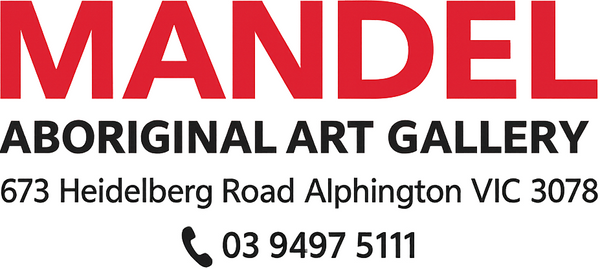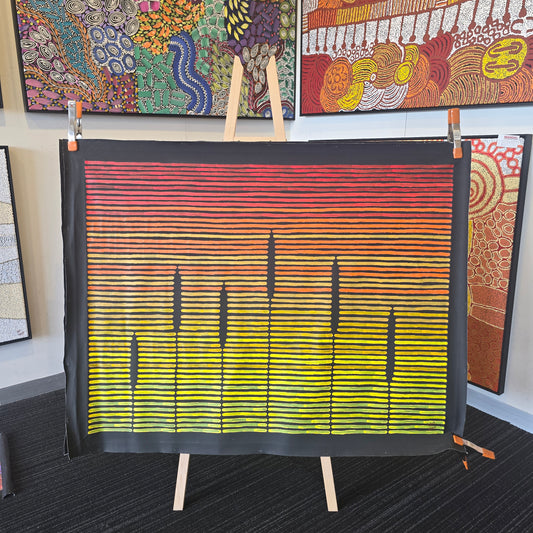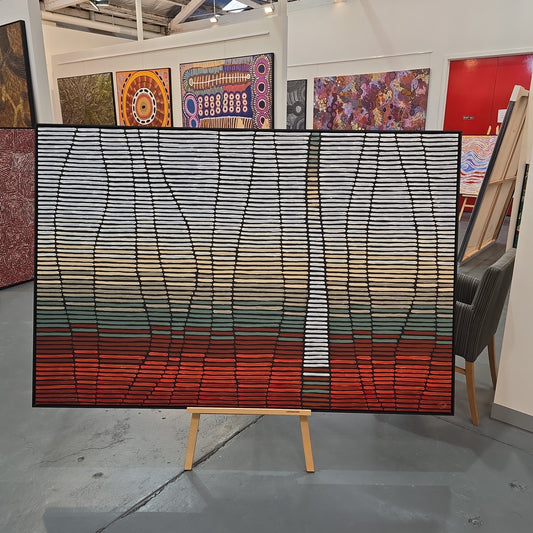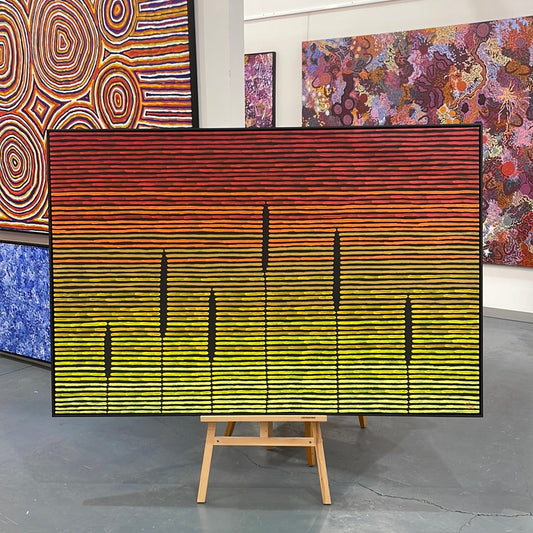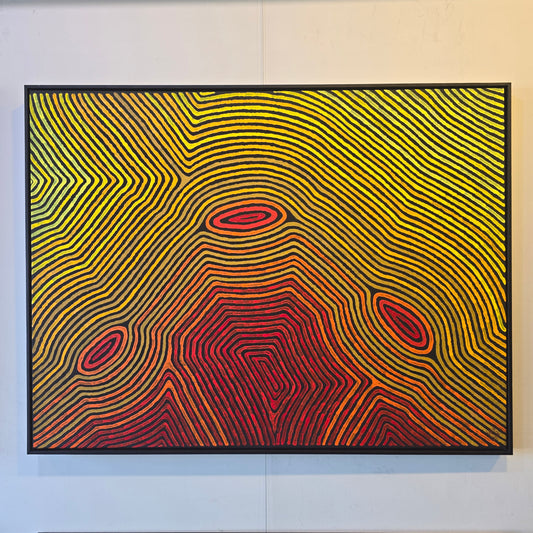Collection: Kurun Warun
-
Kurun Warun 900 mm x 1200 mm
CODE : 9478Vendor:Kurun WarunRegular price $3,900.00 AUDRegular priceUnit price / per -
Kurun Warun 1230 mm x 1840 mm
CODE : 7941Vendor:Kurun WarunRegular price $4,900.00 AUDRegular priceUnit price / per$5,500.00 AUDSale price $4,900.00 AUDSale -
Kurun Warun 900 mm x 1200 mm
CODE : 8830Vendor:Kurun WarunRegular price $3,900.00 AUDRegular priceUnit price / per -
Kurun Warun 1200 mm x 1800 mm
CODE : 8475Vendor:Kurun WarunRegular price $4,900.00 AUDRegular priceUnit price / per$5,500.00 AUDSale price $4,900.00 AUDSale -
Kurun Warun 1200 mm x 1800 mm
CODE : 8833Vendor:Kurun WarunRegular price $4,900.00 AUDRegular priceUnit price / per$5,500.00 AUDSale price $4,900.00 AUDSale -
Kurun Warun 900 mm x 1200 mm
CODE : 8831Vendor:Kurun WarunRegular price $3,900.00 AUDRegular priceUnit price / per -
Kurun Warun 900 mm x 1200 mm
CODE : 7989Vendor:Kurun WarunRegular price $2,900.00 AUDRegular priceUnit price / per$3,900.00 AUDSale price $2,900.00 AUDSale -
 Sold out
Sold outKurun Warun 900 mm x 1200 mm
CODE : 9612Vendor:Kurun WarunRegular price $3,900.00 AUDRegular priceUnit price / per -
Kurun Warun 900 mm x 1200 mm
CODE : 9570Vendor:Kurun WarunRegular price $3,600.00 AUDRegular priceUnit price / per$3,900.00 AUDSale price $3,600.00 AUDSale -
Kurun Warun 900 mm x 1200 mm
CODE : 9571Vendor:Kurun WarunRegular price $3,900.00 AUDRegular priceUnit price / per
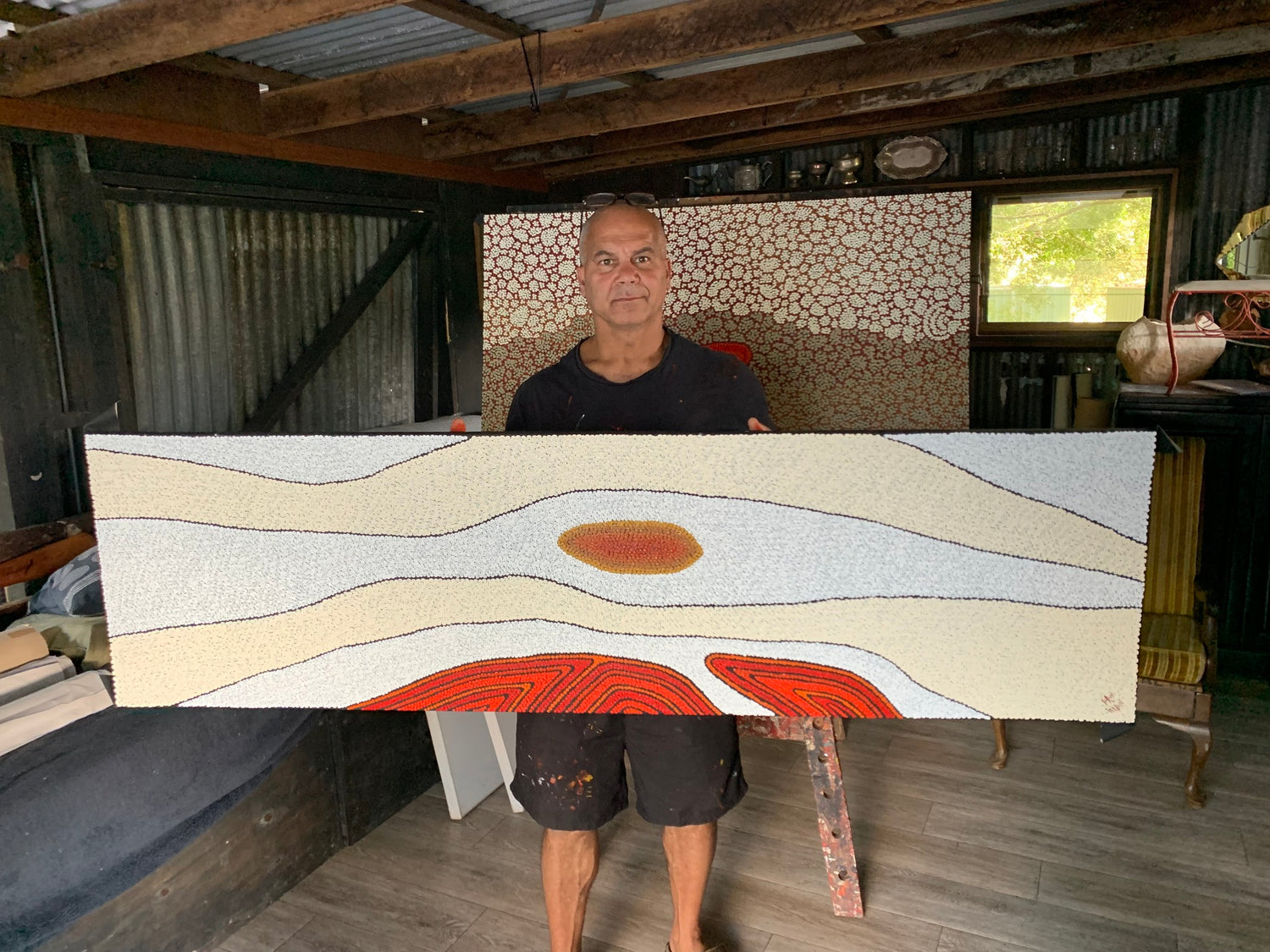
Who is Kurun Warun?
Kurun Warun, whose name translates to "Hissing Swan" in the Kirra wurong language, is a distinguished Aboriginal artist renowned for his mesmerising dot paintings. His artworks adorn prestigious collections worldwide, from the homes of celebrities like Oprah Winfrey to the halls of institutions such as Cambridge University.
Born in 1966 in the Framlingham Mission community, Kurun Warun draws inspiration from his rich Guntijamara heritage, tracing his lineage back to Truganini, the iconic Tasmanian indigenous queen. His art, deeply rooted in Aboriginal culture, is a powerful narrative of heritage and storytelling.
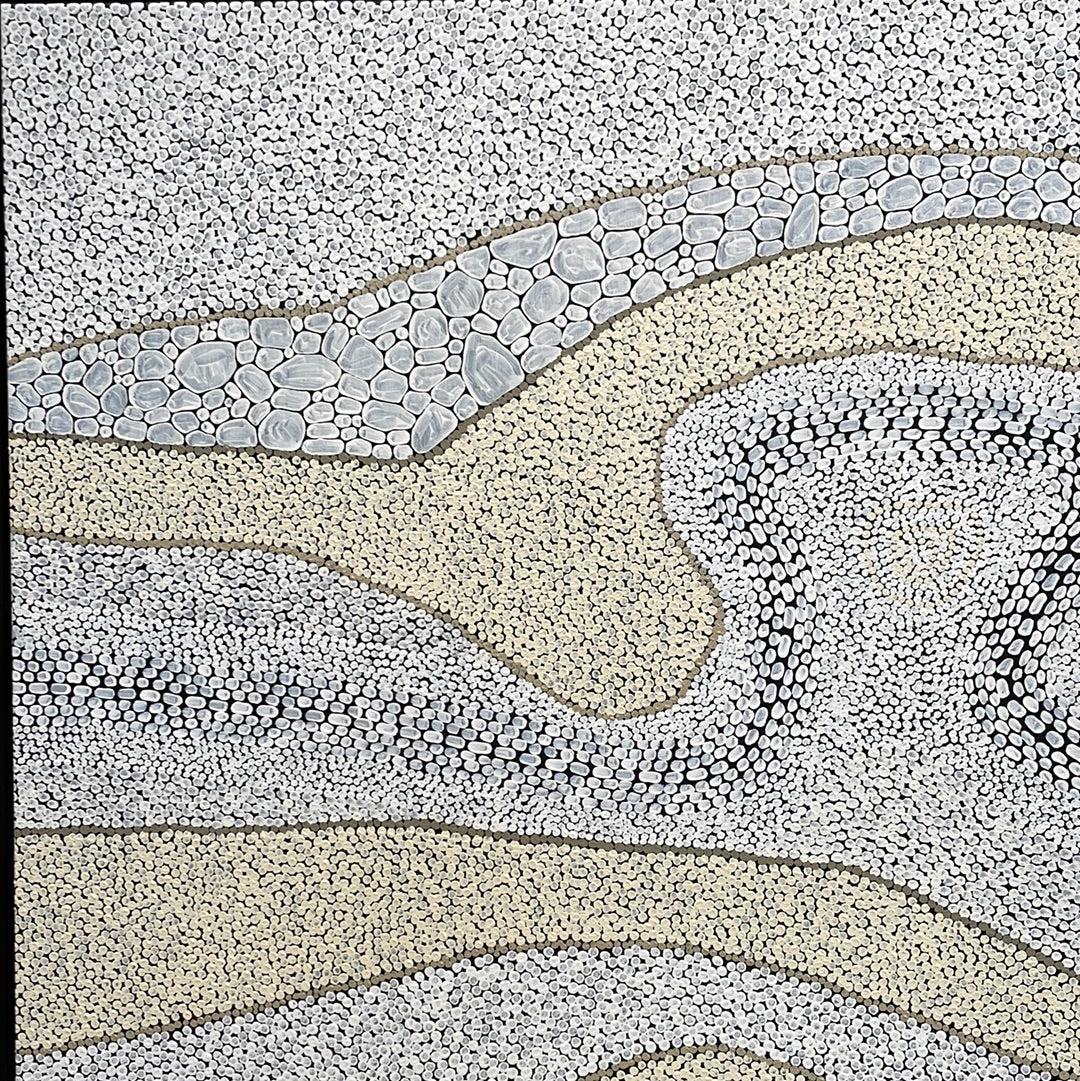
Early Beginnings and Artistic Evolution
Kurun Warun's artistic journey began at a young age, influenced by his upbringing and familial ties to the rich artistic traditions of his community. Despite exhibiting his first artwork alongside his mother at the tender age of 8 in 1974, it was in adulthood that Kurun Warun returned to his artistic practice with renewed dedication and vigour.
Growing up amidst the serene landscapes of Noosa Hinterland in Queensland, Australia, he developed a deep connection with nature's elements — the tranquil rivers, the stones beneath them, and the life that thrives within. These early influences laid the foundation for his distinctive style, characterised by intricate dot patterns that weave stories of ancestral wisdom and natural beauty.
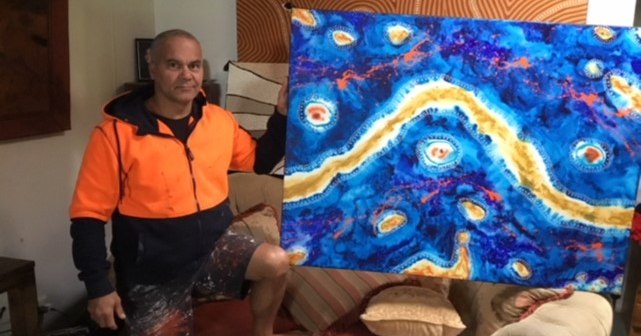
The Artistic Style of Kurun Warun
Kurun Warun's art is characterised by its bold use of colours and distinctive contrasts, reflecting the vibrant hues found in nature and cultural body markings of Indigenous Australians. His paintings often feature red, black, and white tones, each carefully chosen to convey deeper cultural meanings and connections to the land. This striking visual language not only captivates viewers but also invites them to contemplate the spiritual and environmental dimensions of Aboriginal life.
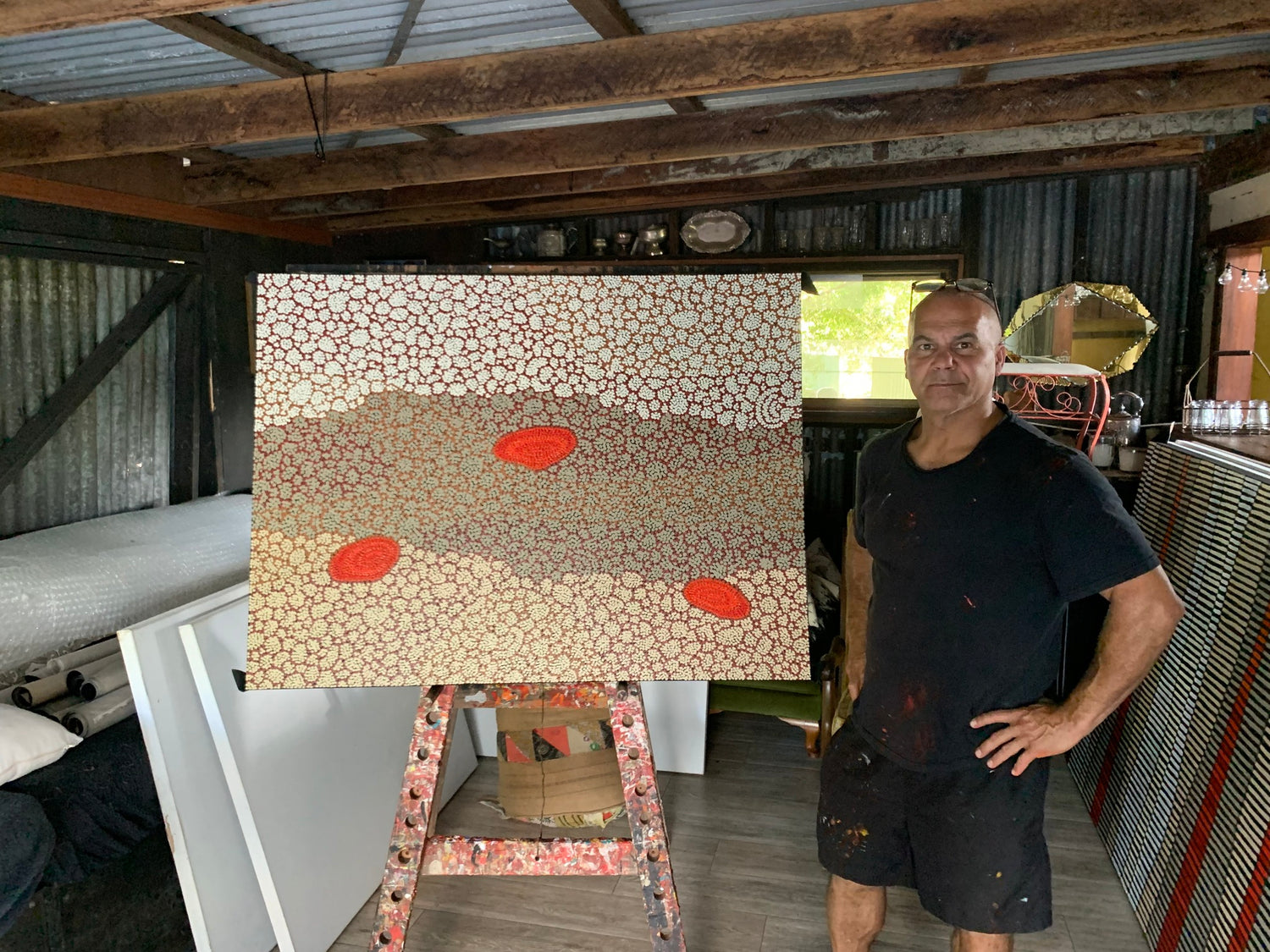
Framlingham, where Kurun Warun's mother hailed from, is historically important as an Anglican mission turned Aboriginal reserve. This site, situated along the Hopkins River, serves as a poignant backdrop that informs Kurun Warun's artistic narrative, imbuing his works with layers of historical and cultural significance. The legacy of Framlingham resonates through Kurun Warun's art, reflecting the enduring spirit of resilience and cultural continuity among Aboriginal communities.
Themes and Inspirations
Central to Kurun Warun's artworks are elements drawn from Aboriginal stories and living culture. His paintings capture the essence of landscapes, wildlife, and spiritual narratives, offering viewers a profound glimpse into the Aboriginal experience in Australia. Each piece serves as a visual testament to the resilience and heritage of his people, portraying narratives that resonate across generations.
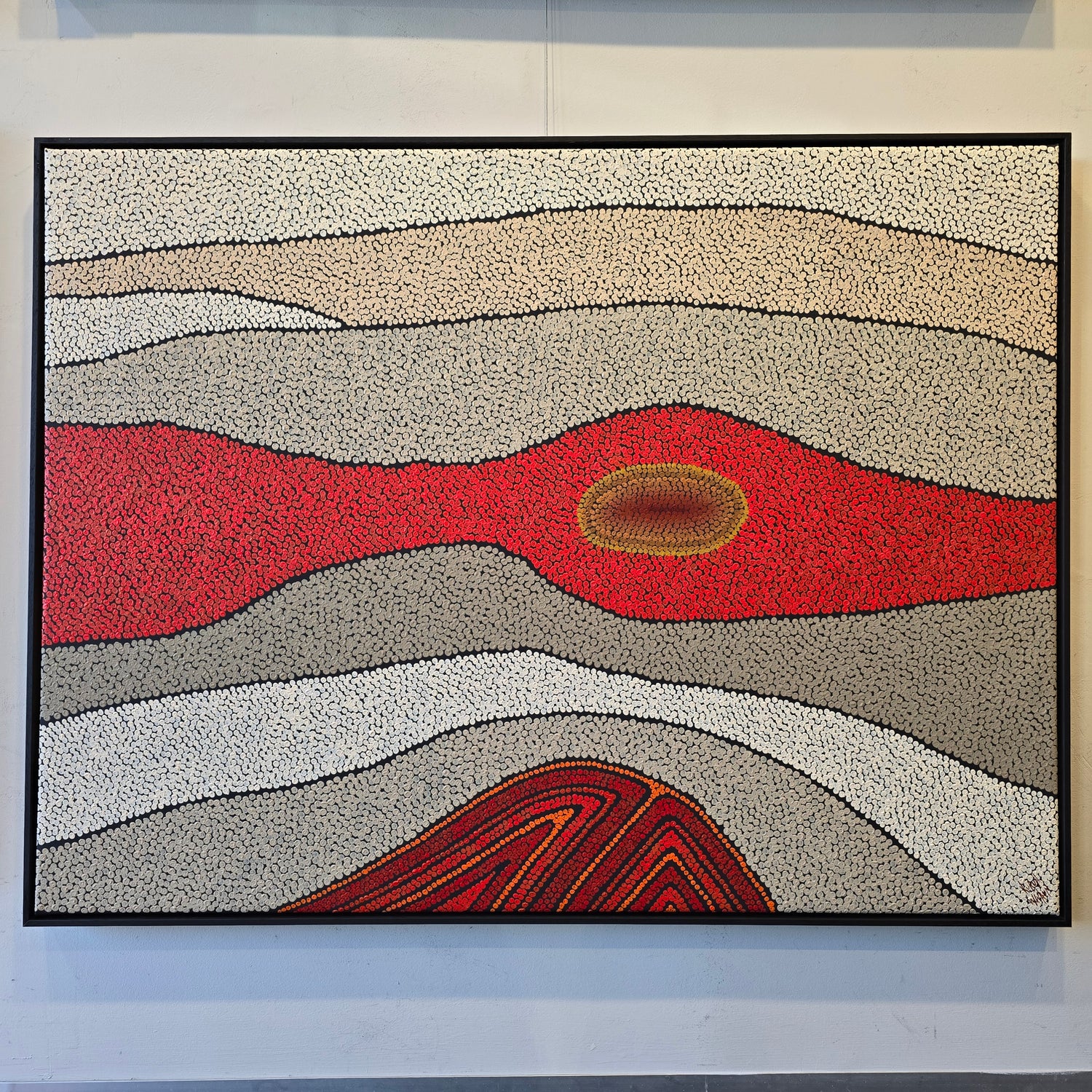
Exhibition Highlights
Throughout his career, Kurun Warun has showcased his art internationally, with notable exhibitions in prestigious galleries such as the Noosa Regional Gallery, Parliament House in Brisbane, and South Korea and Sydney venues. His exhibitions not only celebrate his artistic prowess but also educate and inspire audiences globally about Aboriginal art and culture. These showcases provide platforms for dialogue on Indigenous perspectives and the enduring relevance of traditional knowledge in contemporary art.
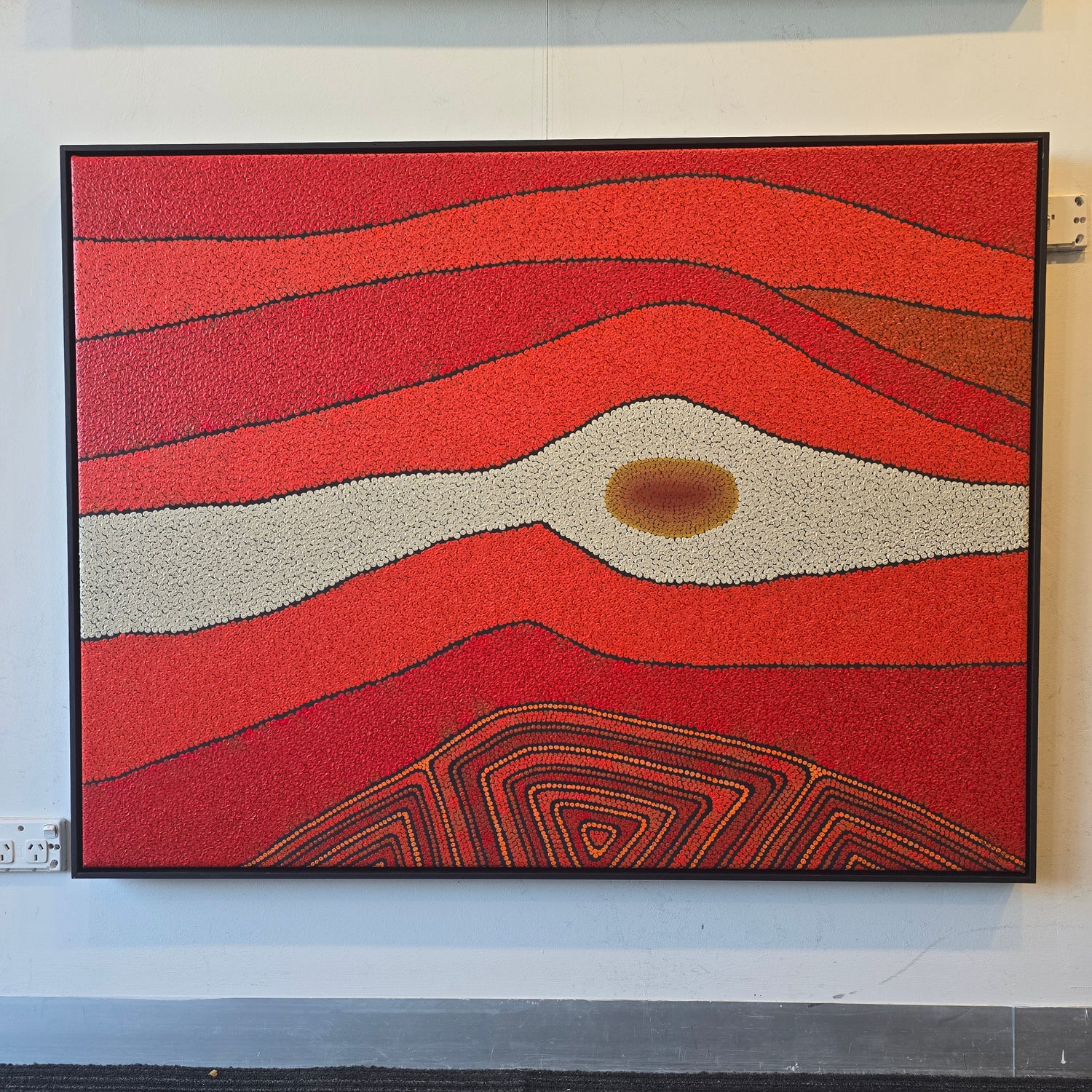
Cultural Heritage and Legacy
Kurun Warun's lineage connects him to prominent figures like artist Lin Onus and musician Archie Roach, highlighting the interconnectedness of artistic expression and cultural storytelling within his family. His great-grandmother's lineage to Truganini, known as “The Last Tasmanian Aboriginal”, further underscores his deep roots in Australian Indigenous history. This familial heritage informs and enriches Kurun Warun's artistic practice, infusing his works with personal and collective memories that resonate profoundly with audiences.
International Recognition
Over the years, Kurun Warun's work has garnered international acclaim, captivating collectors and art enthusiasts worldwide. His paintings, sought after for their authenticity and emotional power, have been featured in prominent exhibitions across Australia and beyond. From the halls of Parliament House in Brisbane to galleries in Rome and South Korea, his art transcends cultural boundaries, speaking a universal language of beauty and cultural heritage.
Celebrating Culture Through Mandel Aboriginal Art Gallery
Kurun Warun's art transcends mere aesthetics; it bridges past and present, offering a profound reflection on Aboriginal identity and cultural continuity. Through his bold artistic expression and poignant storytelling, Kurun Warun invites audiences to explore and appreciate the enduring spirit of Aboriginal Australia. His artworks not only celebrate the beauty of the natural world but also challenge viewers to engage with the complexities of Indigenous history and contemporary realities.
Explore more of Kurun Warun's captivating artworks and immerse yourself in the living culture of Australia's Indigenous heritage. Contact us via phone at (03) 9497 5111 or visit Mandel Aboriginal Art Gallery.
Frequently Asked Questions
Who is Kurun Warun?
Kurun Warun is an Australian Aboriginal artist and musician of Gunditjmara descent. He is known for vibrant dot paintings that reflect ancestral stories, deep cultural heritage, and strong connections to land and water.
What does “Kurun Warun” mean?
"Kurun Warun" means “Hissing Swan” in his traditional Kirrae Whurrong language, which also symbolizes his cultural identity and artistic voice.
What themes are represented in Kurun Warun’s artworks?
His art often explores stories of waterholes, rivers, ancestral journeys, creation spirits, and cultural songlines — all tied to his Gunditjmara heritage.
Are Kurun Warun’s artworks authentic Aboriginal art?
Yes. All artworks by Kurun Warun are original, ethically sourced, and created by the artist himself. They often include a certificate of authenticity and are recognized by Indigenous art networks and galleries across Australia.
What painting techniques does Kurun Warun use?
He primarily uses traditional dot painting techniques combined with contemporary Aboriginal expressionism. His works often feature bold color palettes and highly detailed symbolic elements.
Can I get a certificate of authenticity with the artwork?
Yes, Mandel Aboriginal Art Gallery provides a certificate of authenticity with every original Kurun Warun piece to verify its origin and cultural legitimacy.
Do any of Kurun Warun’s paintings depict Dreamtime stories?
Yes, many of his works are inspired by Dreamtime (Tjukurrpa) narratives passed down through his family and community elders.
